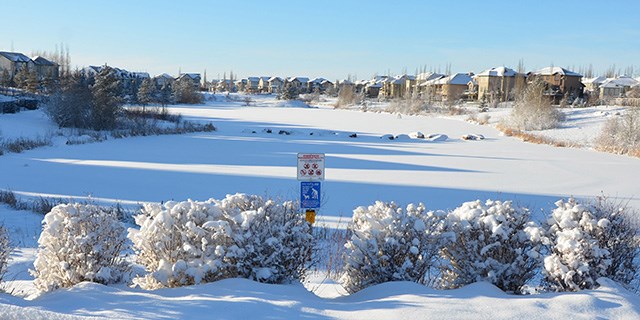Following the recent deaths of the Pelsma family of Edmonton just before Christmas, Alberta RCMP issued a province-wide warning to remind Albertans to be mindful of ice safety amid mild temperatures so far this winter.
“With the changing weather conditions and above average temperatures, it is hard to tell the strength or thickness of ice by its appearance,” reads the RCMP's Dec. 27 release. “RCMP have responded to multiple occurrences over this past weekend and want to remind all Albertans the dangers of unpredictable thin ice and open water.”
As part of the reminder, the RCMP's release advises Albertans to avoid slushy or recently refrozen ice, avoid going on ice at night due to visibility limitations, and avoid going on ice alone.
“Always check the ice for thickness and stability,” the release says. “The colour of ice may be an indication of its strength — clear blue to black ice is strongest, and likely the deepest.”
“You should only skate or walk on ice that is 15 [centimetres thick or more], 20 [centimetres thick or more] for a group of people and 25 [centimetres thick or more] for off highway vehicles.”
In St. Albert, lack of consistent below freezing temperatures means the Lacombe Lake ice surface is still closed to the public, as are a host of social skating surfaces in neighbourhoods throughout the city.
The City of St. Albert also has a permanent warning in place advising residents to avoid going on the ice of stormwater management ponds throughout the city.
“These facilities are not safe for any use, including sledding, skating, snowshoeing, cross country skiing, and walking,” the city's website says. “Once frozen, stormwater facilities may look safe but moving water is continuously flowing below the ice surface.”
“This means that some areas may have ice while other areas may have little to no ice, making [stormwater ponds] very dangerous.”




